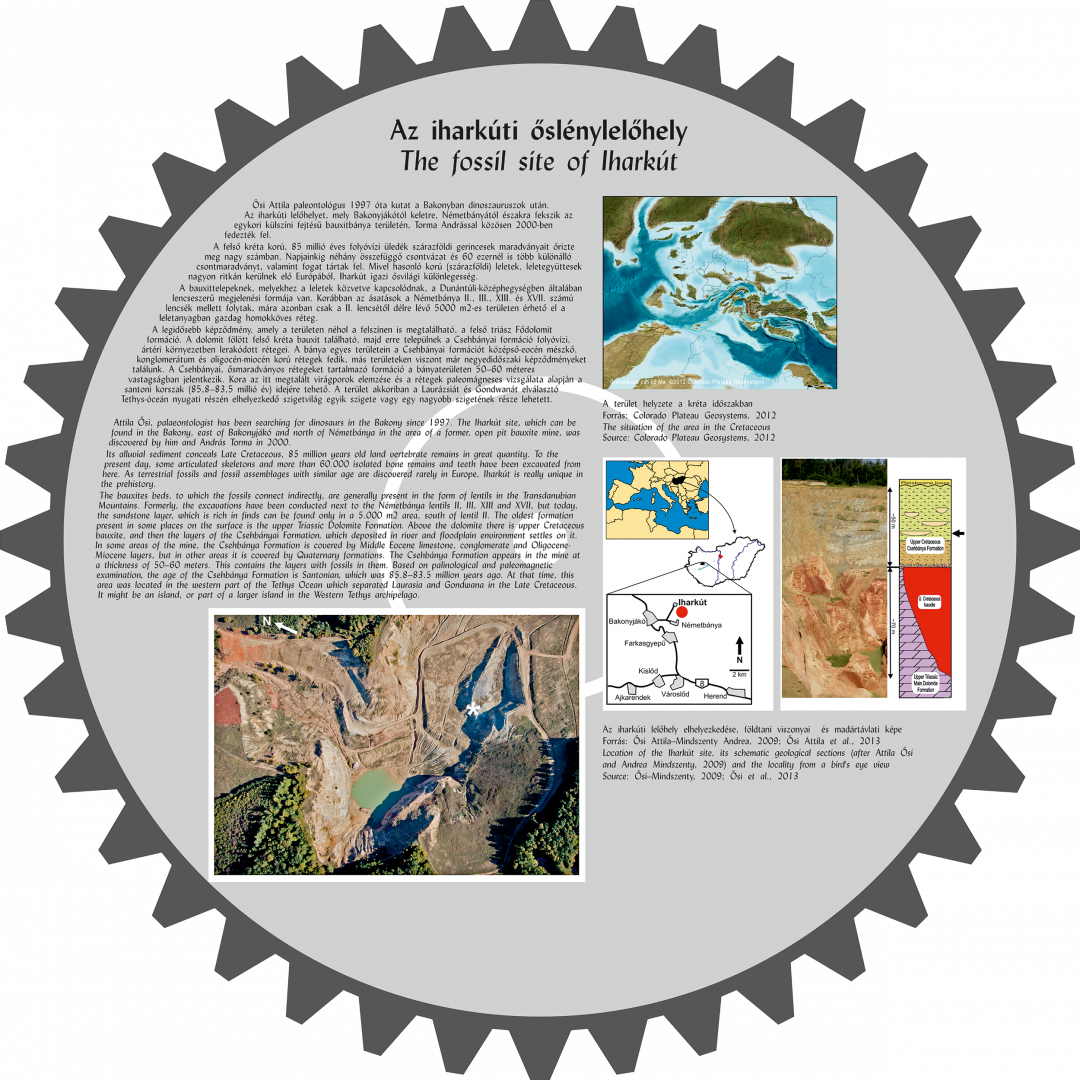HUGARIAN DINOSAUR RESEARCH
The fossil site of Iharkút
Attila Ősi, palaeontologist has been searching for dinosaurs in the Bakony since 1997. He discovered the Iharkút site with András Torma, in 2000. Its alluvial sediment conceals Late Cretaceous, 85 million years old land vertebrate remains. The site is unique because of the fact that terrestrial fossils from this age are rare in Europe. In the past few years articulated skeleton and more than 60.000 isolated bone remains and teeth have turned up from here.
The site can be found in the Bakony, east of Bakonyjákó and north of Németbánya in the area of a former, open pit bauxite mine. The bauxites beds are present in the form of lentils in the Transdanubian Mountains. The excavations have been conducted next to the Németbánya lentils II, III, XIII and XVII, today, the sandstone layer, which is rich in finds can be found only in a 5.000 m2 area, south of lentil II. The oldest formation present in some places on the surface is the upper Triassic Dolomite Formation. Above the dolomite there is upper Cretaceous bauxite, and then the layers of the Csehbányai Formation, which deposited in river and floodplain environment settles on it. In some areas of the mine, the Csehbánya Formation is covered by Middle Eocene limestone, conglomerate and Oligocene-Miocene layers, in other areas it is covered by Quaternary formations. The Csehbánya Formation appears in the mine at a thickness of 50–60 meters. This contains the layers with fossils in them. Based on palinological and paleomagnetic examination, the age of the Csehbánya Formation is Santonian, which was 85.8–83.5 million years ago. At that time, this area was located in the western part of the Tethys Ocean which separated Laurasia and Gondwana in the Late Cretaceous. It might be an island, or part of a larger island in the Western Tethys archipelago.
The situation of the area in the Cretaceous. Source: Colorado Plateau Geosystems, 2012
Location of the Iharkút site, its schematic geological sections (after Attila Ősi and Andrea Mindszenty, 2009) and the locality from a bird’s eye view. Source: Attila Ősi et al., 2013
